Panthéon of Paris- A Mausoleum for France’s National Heroes
Purchases made through links earn us a small commission, at no extra cost to you.
The Panthéon of Paris is a famous monument and mausoleum located on top of Montagne Sainte-Geneviève in Paris’ 5th arrondissement. It is the crowning glory of Place du Panthéon, a square that derives its name from the monument itself, and its dome is a striking feature of Paris’ skyline.
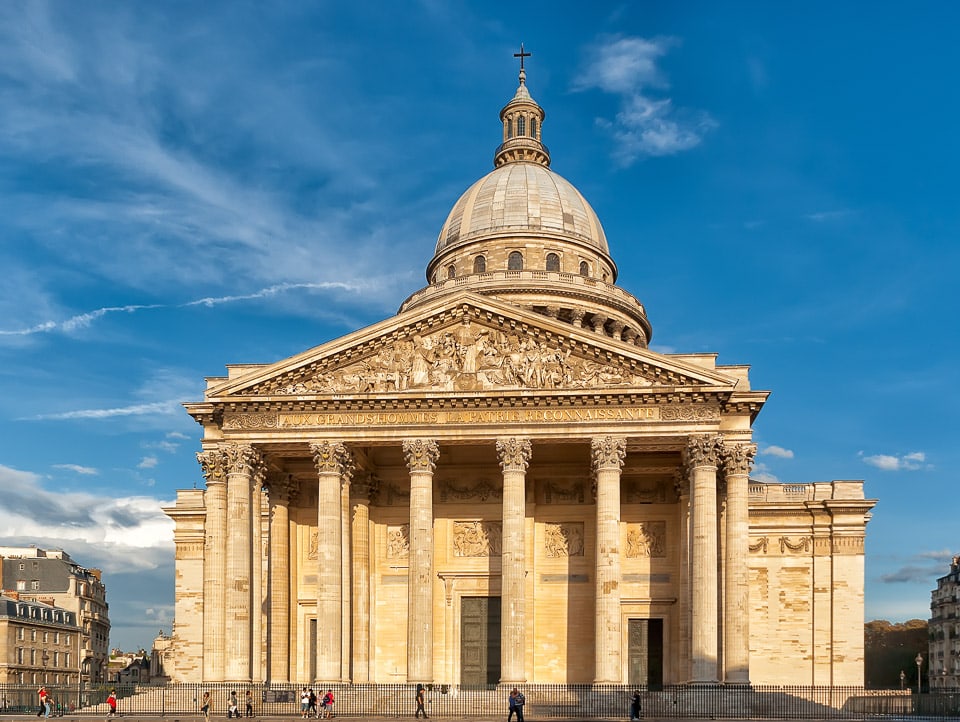
The Panthéon boasts a neoclassical façade with stately Corinthian columns inspired by Greek temples. Its dignified elegance makes it the perfect final resting place for some of the most celebrated figures in French history.
In this guide, you will learn about the history of the Panthéon and the requirements to be buried there, followed by a few of the famous people that have been interred in the Panthéon’s crypt.
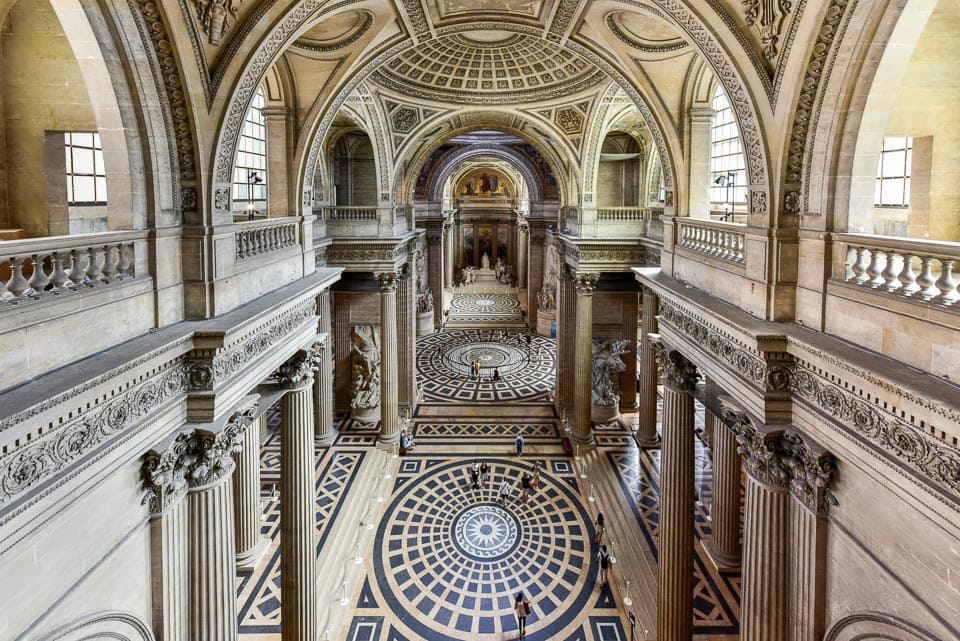
In This Post
The History of the Panthéon
The Paris Panthéon was originally designed by Jacques Germain Soufflot to be a church dedicated to Saint Genevieve and her relics.
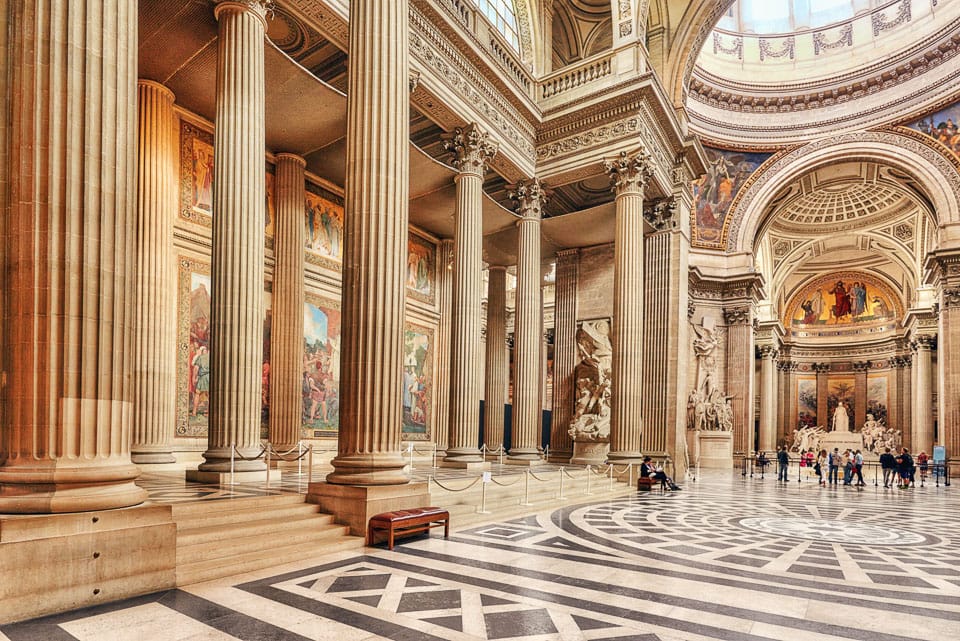
Construction took place between 1758 and 1790, but since it proceeded so slowly due to economic constraints, Soufflot died before the church was complete. He was replaced by his student Jean Baptiste Rondelet who oversaw the final ten years of construction.
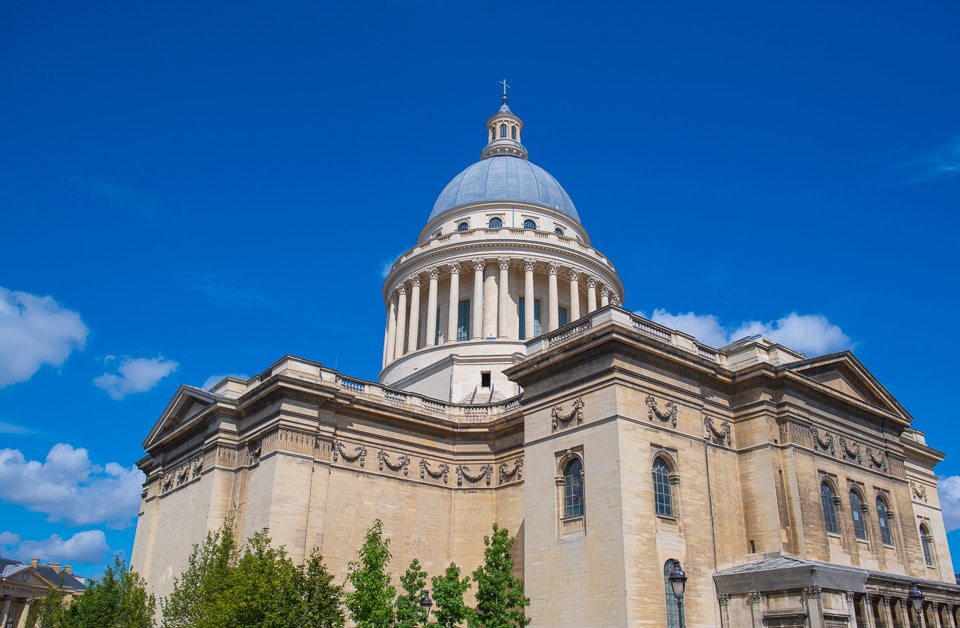
Upon completion, the Panthéon was the first monument to be constructed in the French capital, having been built before the Eiffel Tower and Arc de Triomphe.
The Panthéon served as both a religious and patriotic building, depending on the political regime at the time. During the French Revolution, it was proposed that the Panthéon be dedicated to liberty. In 1791 the National Constituent Assembly declared the church “a temple of the nation”, thereby authorising its underground recesses to be used as a burial place for national heroes. The church had now become a mausoleum.
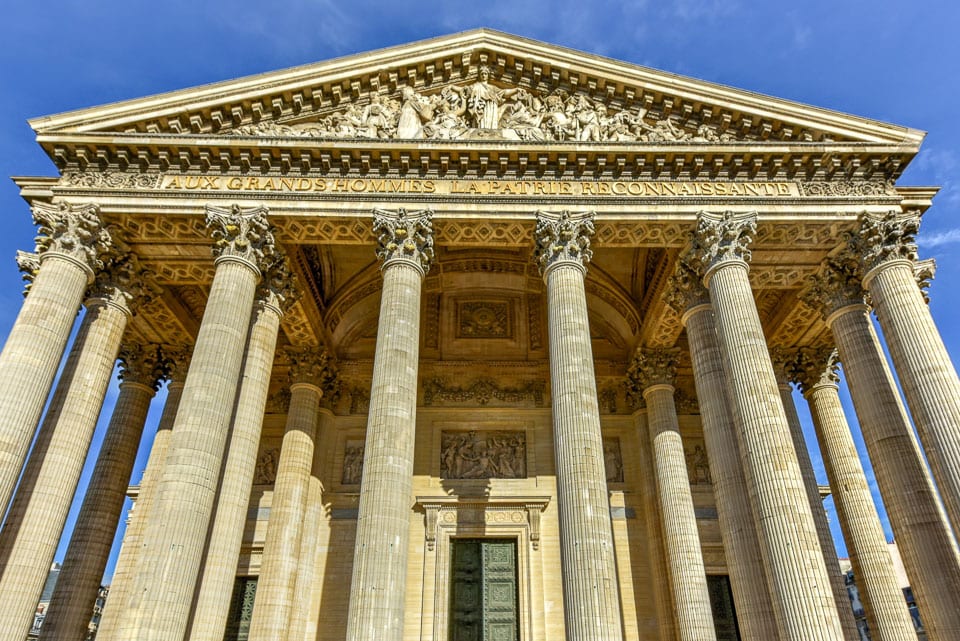
During the 19th century, the Panthéon was reconsecrated and re-secularized many times, however, the crypt maintained its official function as a burial place for illustrious French citizens. Today, the Panthéon of Paris is a civic building that still safely keeps the remains of important French citizens.
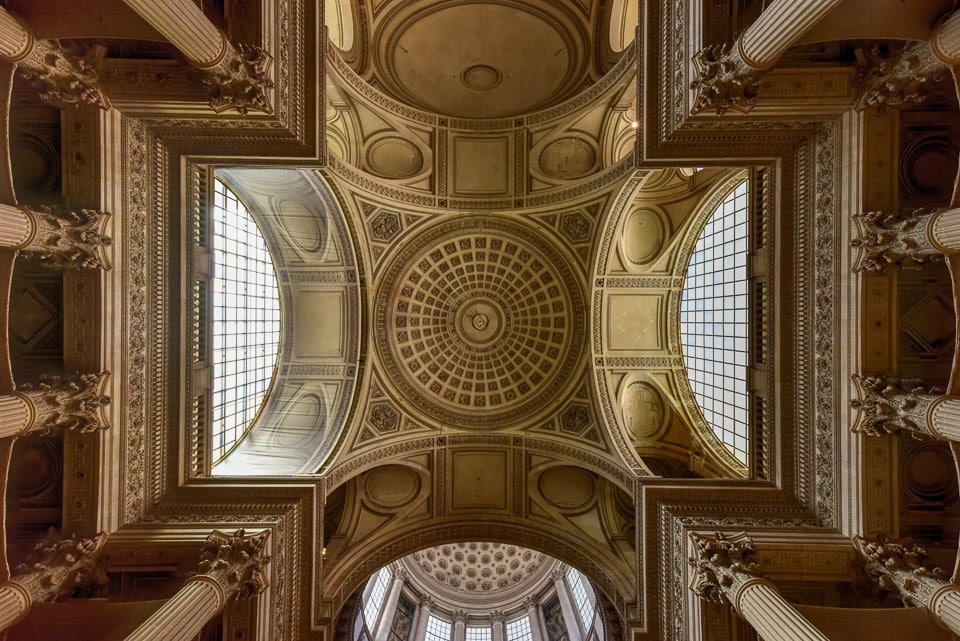
Who Can Be Interred in the Crypt of the Panthéon?
Unlike other burial places and cemeteries in Paris, interment in the crypt of the Panthéon is decided by France’s head of state, so today that would be the President. According to legislation, burials in the Paris Panthéon are reserved for people deserving of national honours, so they’re essentially considered “National Heroes” who helped shape France’s identity.
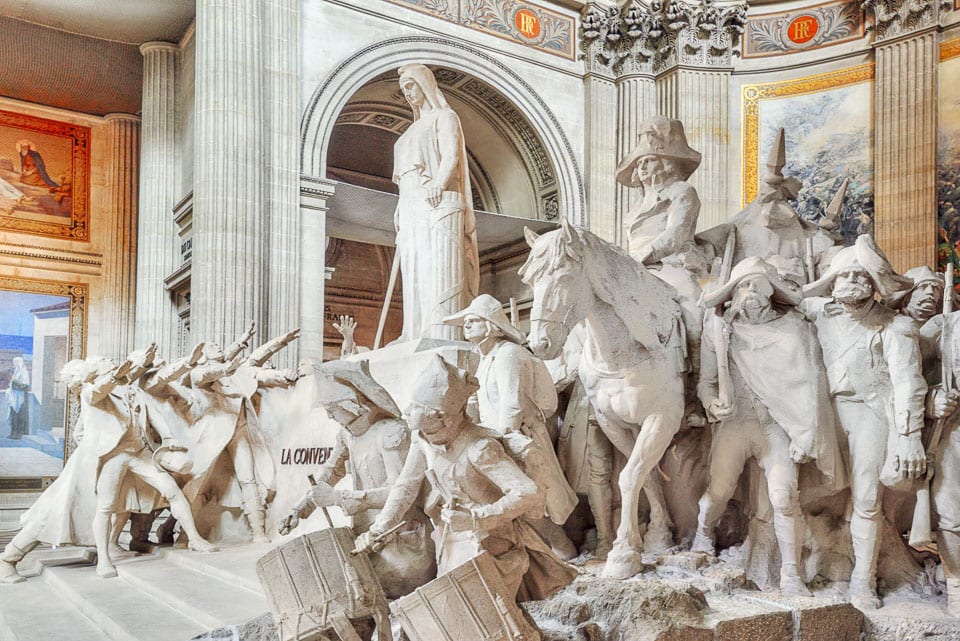
Occupants buried inside the crypt include scientists, writers, artists, politicians and military officers. There are a few people who were not interred on merit, but rather because their spouse, who qualified for burial in the Panthéon, refused to be separated from them in death.
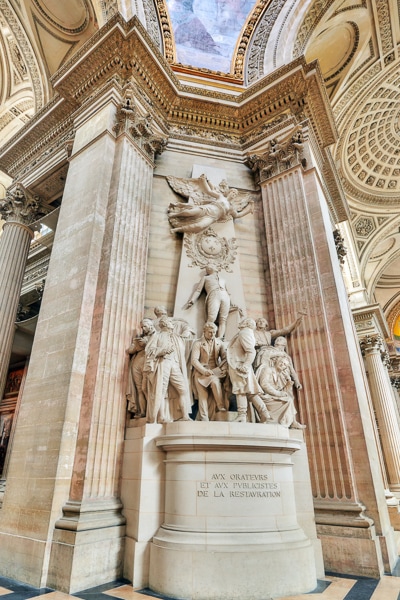
There are a few foreign-born people interred in the crypt who had outstanding achievements while residing in France, so being an immigrant doesn’t automatically disqualify someone from being buried in the Panthéon.
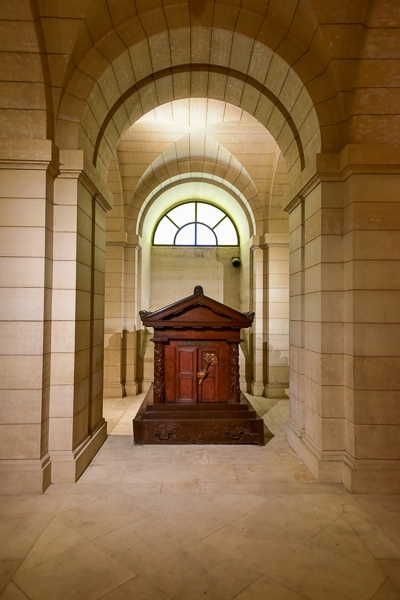
It’s also interesting to note that not all the Panthéon burials happened right after death. Some people have been moved from their original burial location because their reputation and achievements became more widely recognized after death. Transfer to the Panthéon can only happen if the family of the deceased is happy with the moving of the body. If not, soil from their grave may be moved instead.
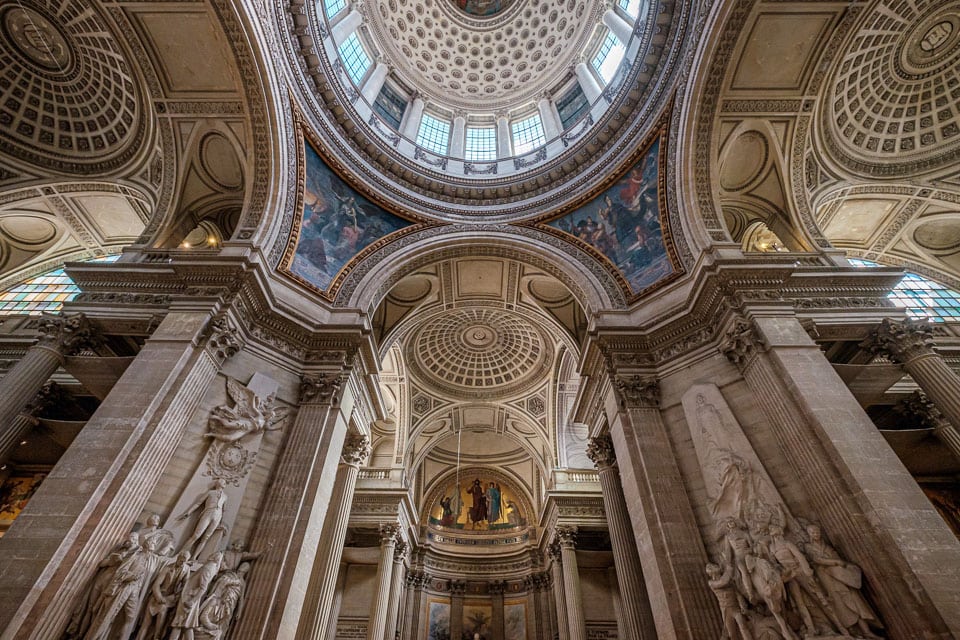
Notable Burials in the Paris Panthéon
There are currently 81 people interred in the Panthéon’s crypt- 75 men and only 6 women. Here are a few of the notable burials in the Paris Panthéon and some of their achievements.
Victor Hugo
Burial: Crypt XXIV
Victor Hugo is considered to be the most famous French poet and novelist of all time, with a career spanning more than sixty years. Among his popular novels are The Hunchback of Notre-Dame and Les Miserables.
Outside of literature, Hugo served as a politician who opposed absolutism (monarchical power) and lobbied for the abolition of capital punishment.
After Hugo’s death from pneumonia in 1885, he was awarded a state funeral and burial in the Panthéon for his achievements in literature, efforts to shape democracy in France, and dedication to French culture.
Victor Hugo’s tomb shares a crypt in the Panthéon with writers Alexandre Dumas and Emile Zola (who was originally buried in Montmartre Cemetery).
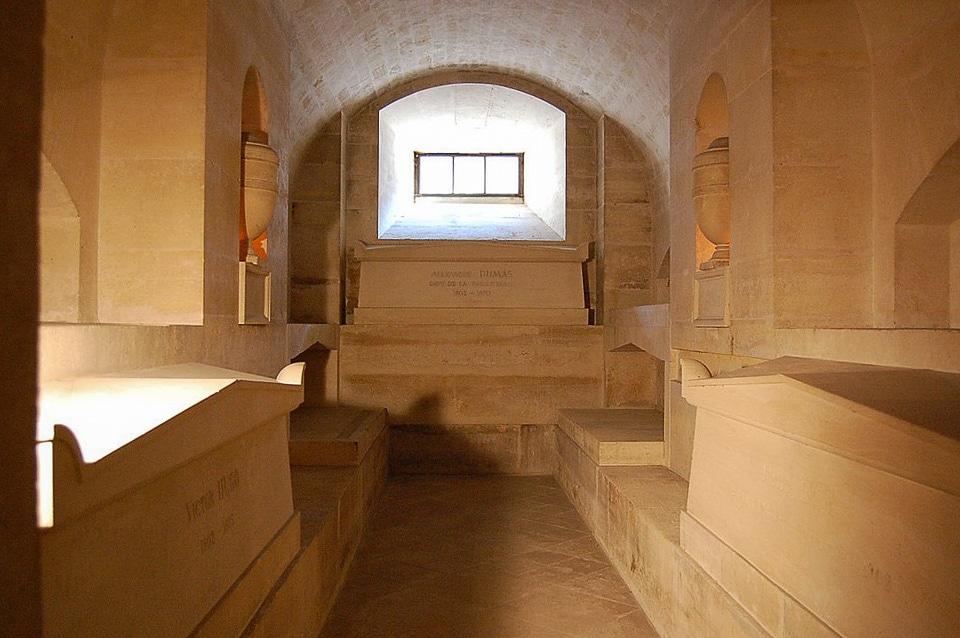
Alexandre Dumas
Burial: Crypt XXIV
Alexandre Dumas is one of the most widely read French authors as his works were translated into nearly 100 languages. His top novels include The Three Musketeers and The Count of Monte Cristo.
Dumas was originally buried in Villers-Cotterets in 1870, but in 2002 French President Jacques Chirac had him reinterred at the Panthéon.
Marie Curie
Burial: Crypt VIII
Marie Curie was a physicist and chemist most famous for her radioactivity research. Her scientific research led to her being awarded the Nobel Prize twice- the first person and only woman to do so.
Although Curie was born Polish, she was naturalized French and thus died a French citizen. Initially buried in Sceaux, her body was exhumed sixty years later in 1995 and transferred to the Panthéon. At the time of her reinterment, she was only the second woman buried in the Panthéon and the first honoured on her own merit.
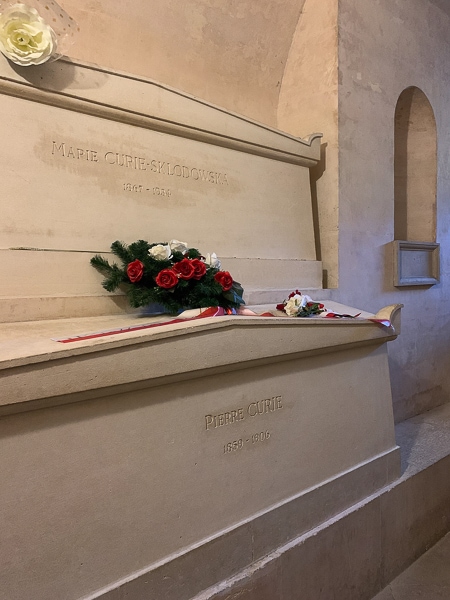
Since Marie Curie died from the side effects of long term exposure to radiation, her body was sealed in a tomb lined with lead to protect the area from radioactive contamination.
Voltaire
Burial: Entrée
Voltaire, born François-Marie Arouet, was a controversial French author and philosopher who was a key player in the Enlightenment intellectual movement.
Voltaire was one of the first internationally successful authors and wrote almost every literary form, from poems to scientific expositions. He was known for being an advocate of free speech, separation of church and state, and freedom of religion (although he was a critic of Christianity and the Catholic church).
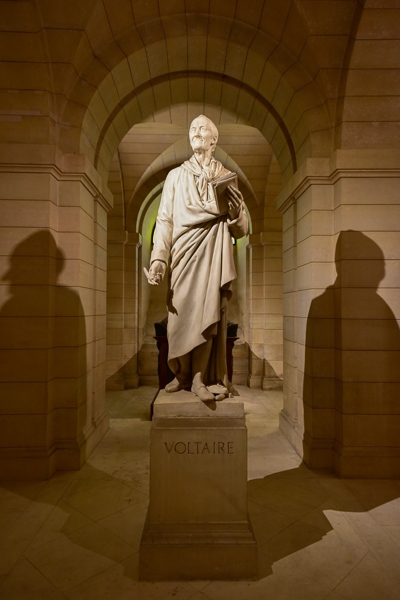
Voltaire died in 1778, but his remains weren’t moved to the Panthéon until 1791 when the National Assembly of France recognized his influence in ushering in the French Revolution. Voltaire was the second person buried in the Panthéon and his interment involved a grand ceremony and procession through Paris that attracted an estimated one million people.
Voltaire’s tomb in the Panthéon rests behind a statue of himself holding a stack of papers and a quill pen.
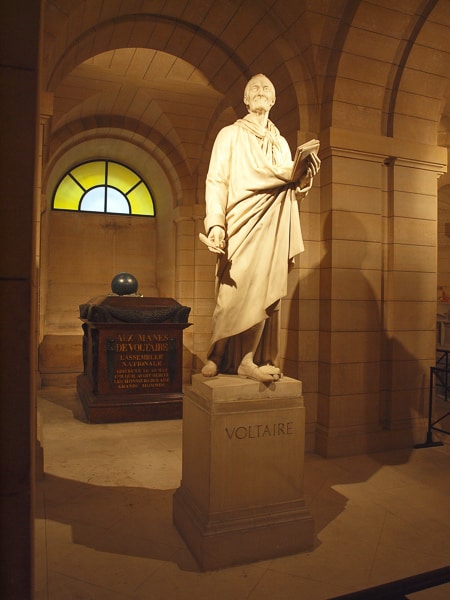
Rousseau
Burial: Entrée
Jean-Jacques Rousseau was a writer and philosopher from Geneva who later moved to Paris. His political philosophies propelled the Age of Enlightenment and are credited with being cornerstones of modern political, educational, and economic thought.
Upon Rousseau’s death in 1778 he was buried on the Ile des Peupliers. Rousseau’s body was moved to the Panthéon in 1794 and his tomb was placed in the crypt near Voltaire’s.
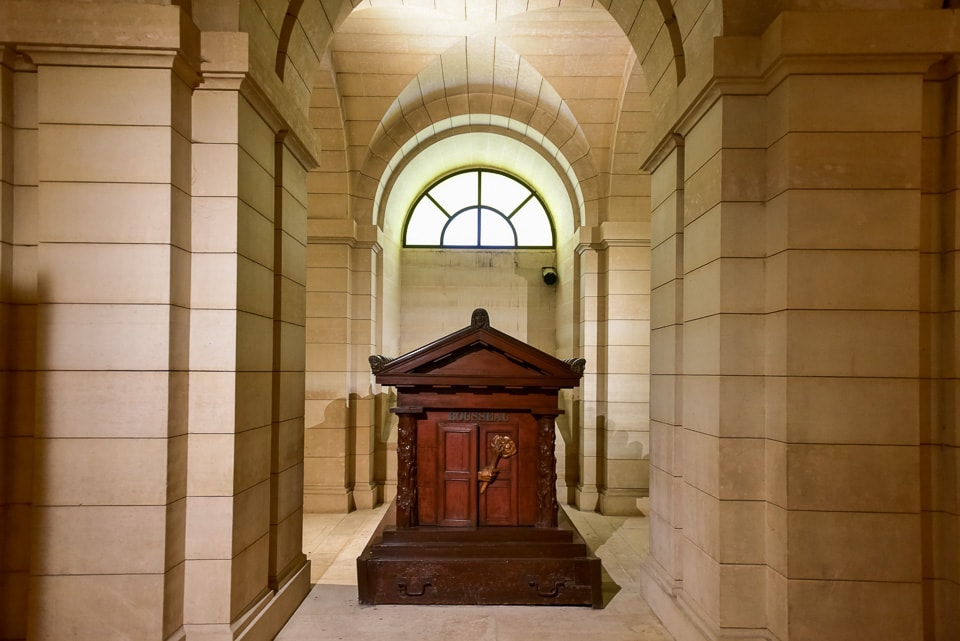
Louis Braille
Burial: Crypt XXV
Louis Braille was a French educator who created a reading and writing system for visually impaired people. His system, known as braille, was not adopted by most educators during his lifetime but is now used worldwide, largely in its original form.
Braille died at the age of 43 and his remains were transferred to the Panthéon on the centenary of his death.
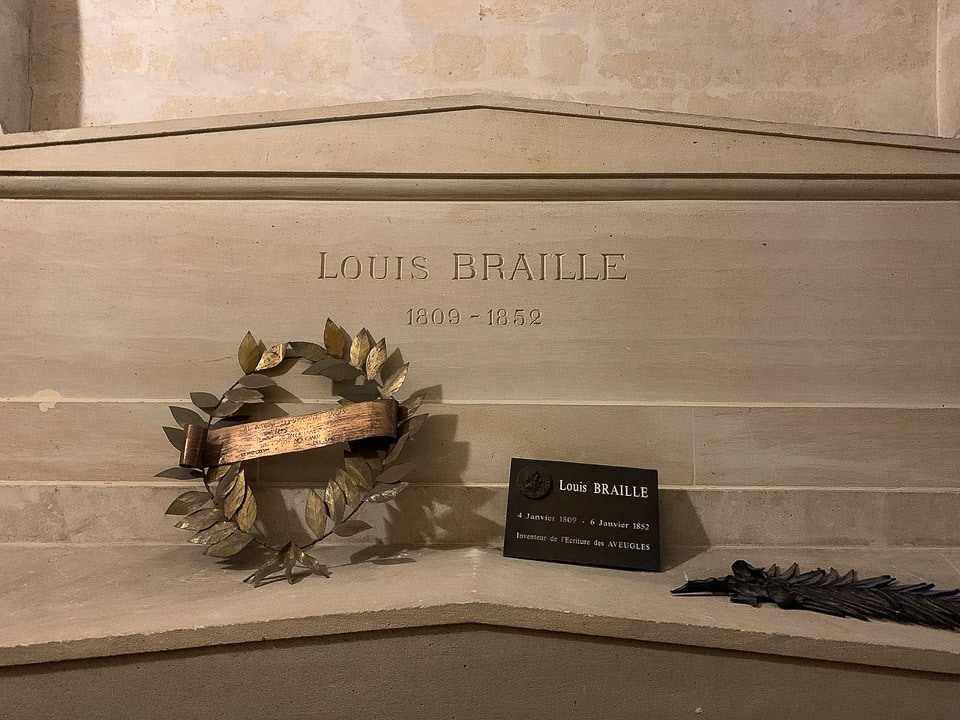
Who Else is Buried in the Panthéon of Paris?- More Panthéon Burials
Here are a few more tombs in the Panthéon of Paris you may be interested in visiting:
- Jacques Germain Soufflot- Architect of the Panthéon (Burial: Entrée)
- Lazare Carnot- Politician and scientist (Burial: Crypt XXIII)
- Sadi Carnot- President of France (Burial: Crypt XXIII)
- Paul Langevin- Scientist (Burial: Crypt XXV)
- Jean Monnet- Economist (Burial: Crypt VI)
- Simone Veil- Politician (Burial: Crypt VI)
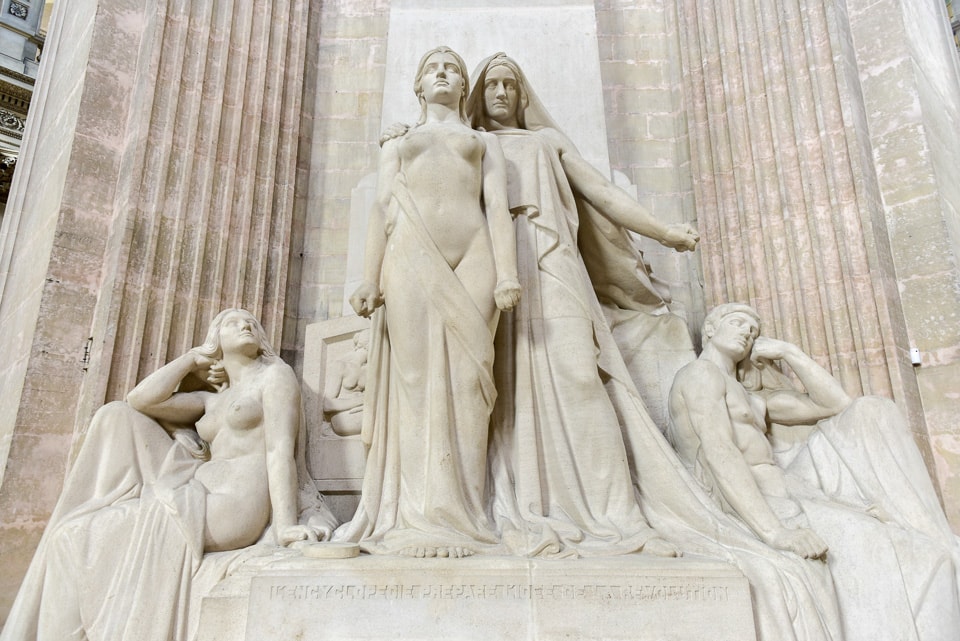
What Can You See When You Visit the Panthéon in Paris?
When you visit the Panthéon in Paris, you will first notice its impressive size and exterior decoration. There are Corinthian columns, a sculpted pediment with figures relating to liberty and the nation, and a grand dome constructed entirely from stone.
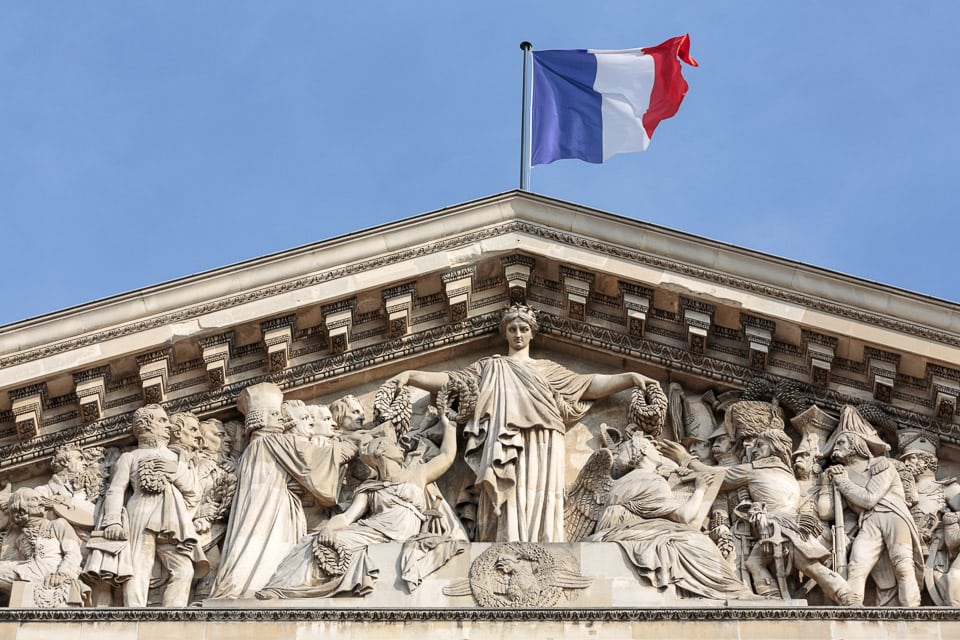
Upon entering the Pantheon, your eyes will be drawn upwards to the 83 metre high dome and its painted ceiling.
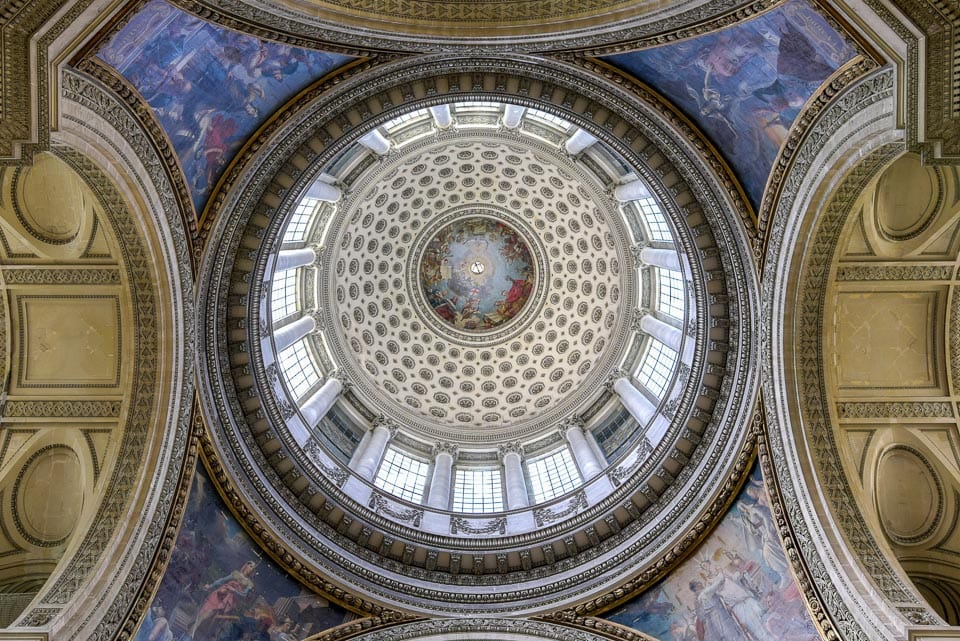
Moving through the naves you’ll see paintings depicting the lives of St. Denis, St. Genevieve, Charlemagne, Joan of Arc and more. There’s also a large sculpture called The National Convention prominently on display.
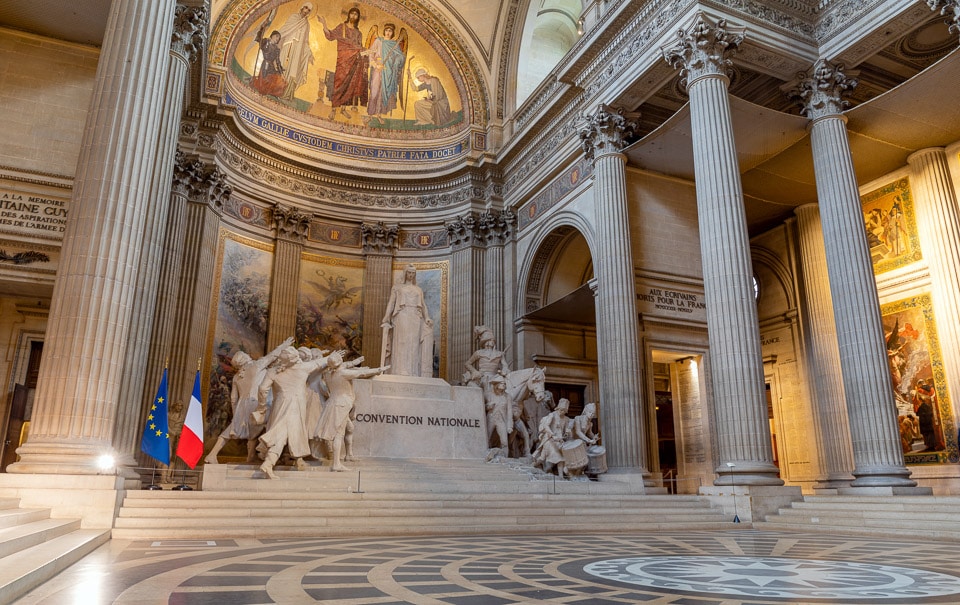
The most unique feature inside the Panthéon is a replica of the pendulum that physicist Leon Foucault hung from the dome in 1851 to demonstrate the rotation of the earth.

Then of course there is the crypt down in the basement. Corridors will deliver you to burial chambers where the tombs are kept. There are informative panels that explain a bit about the life and work of everyone who is buried in the Panthéon.
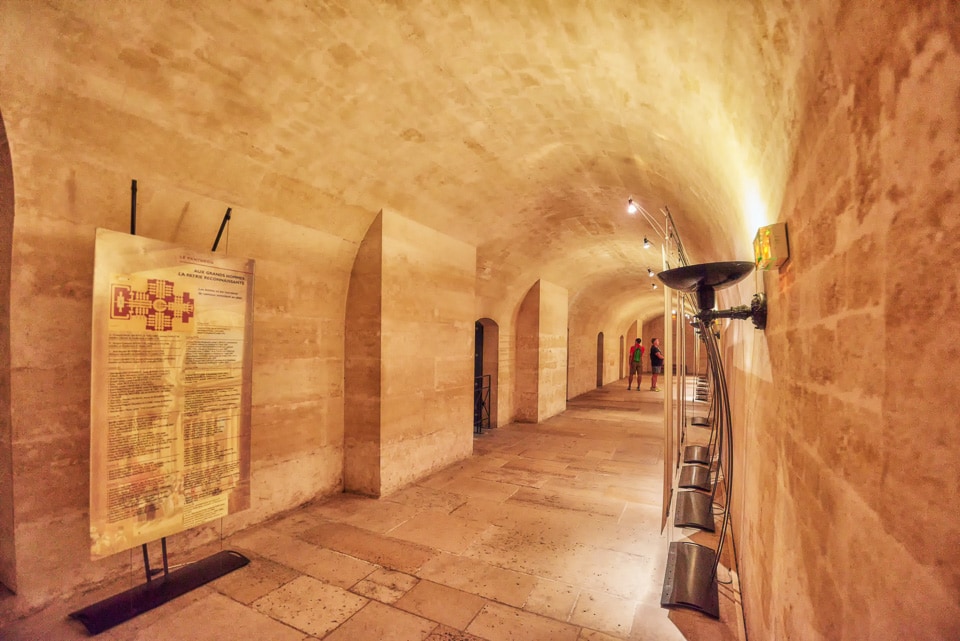
Interesting Facts About the Paris Panthéon
Here are a few more interesting facts about the Panthéon in Paris:
- The Panthéon was modelled after the Pantheon in Rome, which was also used for important burials.
- Napoleon Bonaparte granted 41 people burial rights in the crypt.
- There is an inscription below the pediment that when translated reads “To the great men, from a grateful nation”.
- The facade originally had more windows but they were filled with brick to make the interior more sombre.
- When Victor Hugo’s remains were placed in the crypt it was the first entombment in over 50 years.
- Auguste Rodin’s famous sculpture “The Thinker” was housed in the Panthéon from 1906 to 1922.
- The Panthéon dome is actually three domes that fit within each other.
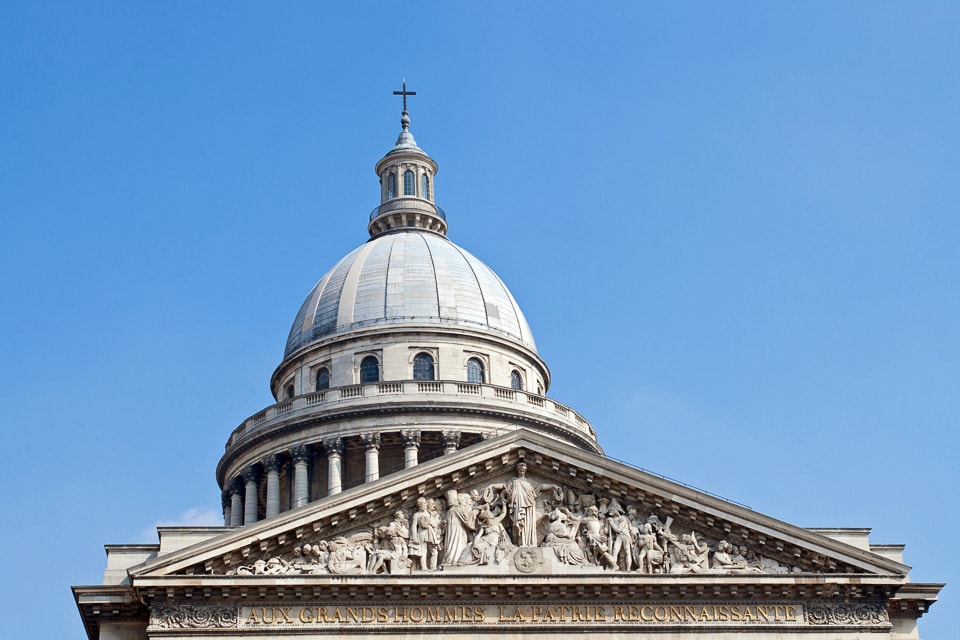
Final Thoughts
The Paris Panthéon is often overlooked by tourists, but it is absolutely worth visiting. From the Panthéon’s famous burials to its inspiring art and architecture, the building is a marvellous monument to French history.
So, next time you find yourself in France, and in particular the buzzing capital city, take the time to visit the Panthéon.
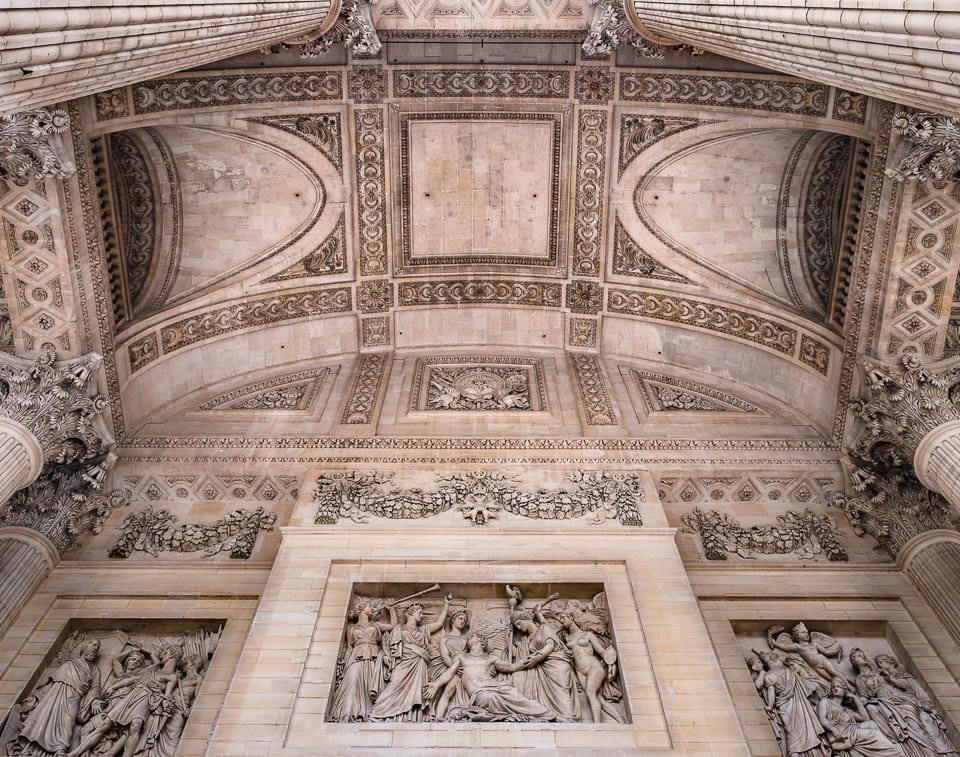
Practical Information for Visiting the Panthéon in Paris
Location: The Panthéon is located at Place du Panthéon in the 5th arrondissement.
Hours: The Panthéon is open daily from 10:00 am- 6:30 pm from April 1- September 30 and 10:00 am- 6:00 pm October 1- March 31. Last entry is 45 minutes before closing time. Confirm current hours here.
- Going up the dome (panorama tour) is only allowed from April 1- September 30.
Admission Fees: Yes. Confirm current prices here.
- To visit the dome you have to buy a separate ticket (in addition to the regular admission). This ticket is purchased on-site.
- Admission to the Panthéon is included in the Paris Museum Pass.
Buy Tickets: You can buy tickets at the entrance or skip the line by buying online here.
Paris Accommodations
If you’re planning to visit the Panthéon and need accommodations, here is a list of hotels in Paris. Please consider booking your Paris accommodations through the included link. It costs nothing extra and helps support this website.
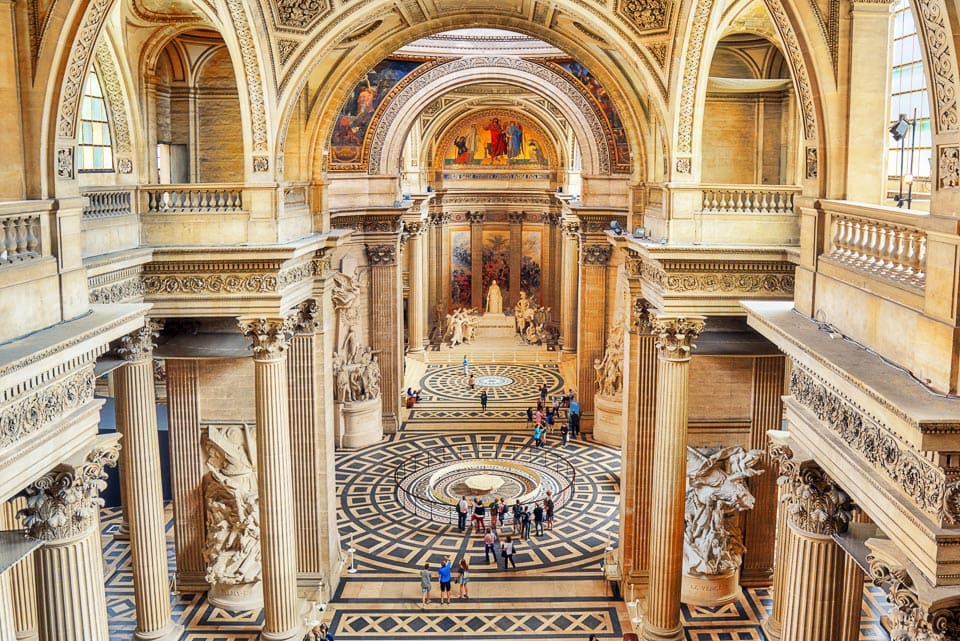
More Burial Places in Paris
- Famous People Buried in Paris- A Guide to the Famous Graves in Paris
- Père Lachaise Cemetery- Paris’ Legendary Necropolis
- Père Lachaise Cemetery Burials- Famous Graves in Père Lachaise Cemetery
- Paris Catacombs- History, Facts and Tips for Visiting
- Montparnasse Cemetery- Paris’ South Cemetery
